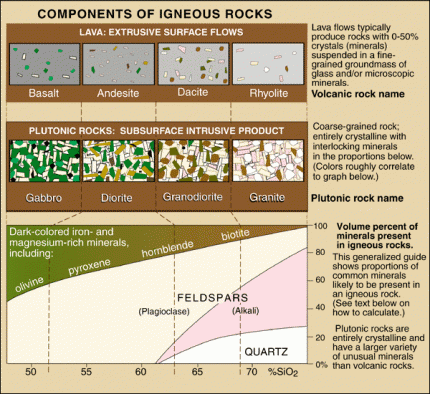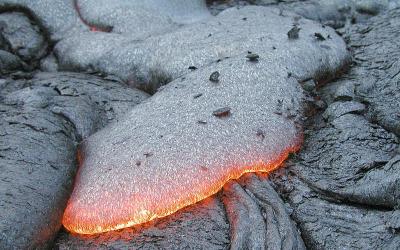The approach to the Peannacle Point area is brutal, there's a reason it's mainly climbers that travel to this isolated outcrop. From the trailhead, it's about 1800 feet elevation gain in 1.5 miles, mostly following the Mt. Washington trail until the last half mile or so. The trail leads unrelentingly up the mountainside, winding through a forest of Douglas Fir, Hemlock, Cedar, and Red Alder, with the symphonies of summer wrens and warblers echoing through the canopy. After leaving the main trail, the climbers boot bath scrambles up through some dense brush, over some fallen trees, and through gaps in the rocky terrain. You eventually pop out into an open area of large talus in the shadow of The Peannacle, a small jutting tower of orange-tan rock nearly 2,000 feet above the valley floor.
 |
| The Peannacle from the base. |
The view from here is spectacular, looking west you can catch sight of the Puget Sound, straight ahead is the yawning Snoqualmie Valley, and to the right is the rugged peaks of the Cascade Range. Intertwined with these are all the geologic stories you can see laid before you.
Filling large portions of the Snoqualmie valley below is a series of large, flat plateaus, several of which have active pit mines. These tablelands collectively make up Grouse Ridge, the remnants of an ice age moraine formed by the Puget Lobe of the Cordilleran Ice Sheet as it advanced from the Puget Lowland up the Snoqualmie Valley. The meltwater streams issuing from the Puget Lobe deposited the sand, gravel, and glacial erratics making up Grouse Ridge in front of it.
 |
| Mount Si with the flat-topped Grouse Ridge Moraine in front. |
Mount Si itself, rising across the valley and behind Grouse Ridge, is another story. Mount Si is made of what's known as a melange, a blended mixture of different rock types swirled together in a chaotic mass. The rocks making of Mount Si are far older than any of the volcanic rocks in the Cascade Range, being emplaced well over 66 million years ago.
The rock of Peannacle Point itself was an enigma for most of the day. When I first visited this site before my CWU Geology education, I took one look at the rock and proclaimed that it was part of the Snoqualmie Batholith, a granite. I was under that same conclusion at the beginning of this excursion again, until I started looking at the rock closer. As my dad and brother scaled the different faces, I slowly realized I wasn't looking at granite at all. I was looking at something entirely different. The rock at Peannacle Point is a breccia. Breccia is a type of rock formed by gravel or boulders of various other rock types being cemented together in a fine-grained matrix. This is precisely what I saw as I took a close look at different places on the outcrop; to my dismay, I realized I had been a sucker. This wasn't the Snoqualmie Batholith at all; this was part of the Ohanapecosh Formation.
 |
| Cell phone photo of the Breccia of Peannacle Point. Note the rock pieces visible above the camera lens and the large, greenish clast in the top right corner. |
The Ohanapecosh Formation is a thick pile of sedimentary rocks laid down as a direct result of the volcanic activity of early Cascade Volcanoes. A large portion of the Ohanapecosh Formation, including rocks that make up the cliffs of Peannacle Point, is a result of violent volcanic events known as pyroclastic flows. Pyroclastic flows are avalanches of superheated gas, rock, ash, and other volcanic material that cascades down the side of a volcano during an explosive eruption. The early Cascade Volcanoes were highly explosive, probably erupting multiple pyroclastic flows that, at that time, only flowed a short distance down the volcano's slopes before plunging into the Pacific Ocean, which lapped at the volcano's feet. The deposition of pyroclastic flows into water forms breccia, like the breccia found in the Ohanapecosh Formation.
 |
| A pyroclastic flow entering the ocean. Photo courtesy of the British Geological Survey. |
The deposition of the Ohanapecosh Formation occurred between approximately 38 and 25 million years ago. As it turns out, this time is roughly concurrent with the deposition of our dear friend, the Blakeley Formation. Could it be possible that the Ohanapecosh Formation was deposited onto a continental shelf as pyroclastic flows and other volcanic debris crashed into the sea, and when that material demobilized or continued into deeper water, it began to construct a thick undersea fan, settling into distinct, well-sorted layers, building the Blakeley Formation? I think it's more than possible, however, the evidence that I'm establishing for that and my reasoning will have to wait for another post. It's always fun to find something so far from home that might have a connection to the rocks which are just beneath our feet.
Until the next adventure!
Until the next adventure!



















